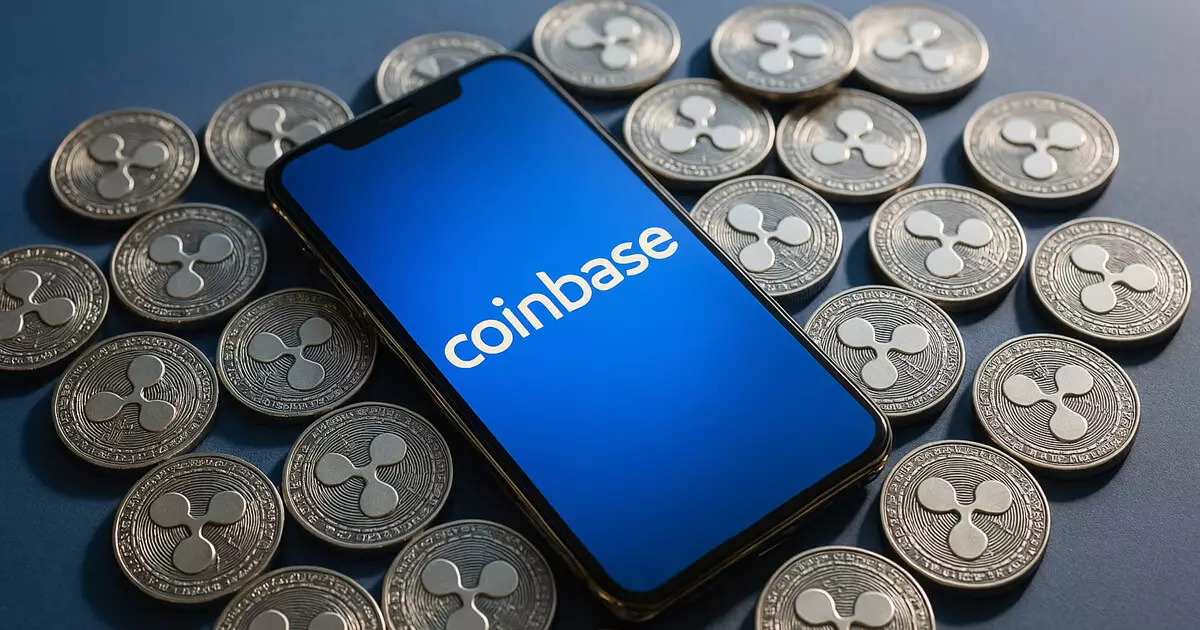Coinbase’s recent application to the U.S. Commodity Futures Trading Commission (CFTC) to introduce an XRP futures contract marks a watershed moment in the cryptocurrency landscape. If approved, trading could commence as early as April 21, 2025. This strategic move indicates the company’s intent to deepen its foothold in the cryptocurrency market by providing investors with a regulated avenue to gain exposure to XRP. This is not merely a business maneuver; it’s a statement about the future of digital assets in traditional finance.
Regulatory Clarity: A Game Changer
The impending launch of XRP futures is particularly significant in light of Ripple’s recent settlement with the SEC, which brought long-awaited regulatory clarity to XRP. Ripple CEO Brad Garlinghouse’s announcement of the settlement has reignited optimism among investors and firms eyeing the crypto space. It’s no secret that a clear regulatory framework can be the linchpin for mainstream adoption. The potential approval of futures contracts serves a preventative function against market manipulation and price volatility, addressing long-standing concerns that have hindered institutional participation.
Institutional Adoption on the Horizon
Should the XRP futures contracts be green-lighted, we could witness a remarkable uptick in institutional interest in cryptocurrencies. With established companies like 21Shares and WisdomTree already signaling their intent to offer XRP ETFs, the landscape is ripe for institutional players to embrace this digital asset. Coinbase’s futures proposal goes beyond simple trading; it offers an entry point for institutions traditionally hesitant about dealing directly in volatile cryptocurrencies. By legitimizing XRP through regulated instruments, Coinbase could pave the way for a broader acceptance of digital currencies in the financial ecosystem.
Positive Market Sentiments Amid Broader Weakness
Interestingly, XRP has recently emerged as one of the best-performing assets within the top 10 cryptocurrencies. Despite a broader market downturn, XRP recorded gains of over 2%. The recent filings seem to be buoying investor sentiment, indicating that participants are optimistic about the forthcoming futures contracts. The timing of this optimism cannot be understated; it comes when the crypto market is seeking stability, and futures contracts could present a stabilizing influence.
From Futures to ETFs: A Logical Progression
Market analysts are keenly aware of the historical trajectory of Bitcoin and Ethereum, both of which saw ETF approvals only after their respective futures markets were established. With XRP likely to follow a similar path, the successful launch of futures could be the crucial pivot that regulators need to consider spot ETF approvals. The landscape is shifting, and with nine asset managers already expressing interest in developing XRP ETFs, the momentum is growing. This continued evolution solidifies the notion that XRP is not merely a secondary player but is carving out its niche in the complex world of crypto financing.
The stage is set for what could be a dramatic transformation in both XRP’s market positioning and the broader cryptocurrency ecosystem. As the horizon brightens for regulatory acceptance and institutional investment, the cynics of the crypto space may find it increasingly difficult to dismiss the relevance and potential of digital assets like XRP.
















Leave a Reply